A week ago the Incorrigible Mr Bugg and I did an outing to Jordan Lake, with the consideration that it would be a sunset shoot if the rain held off. Despite some issues which greatly reduced the number of useful images (which I’ll get into shortly,) there were enough for more than one post and I had to decide how to break them up. I ended up separating out all of the raptor images, so they’ll be along in a later post while this one will be devoid of birds of prey entirely. Well, that all depends on your definition of “prey” I guess. But first, some eclectic finds.
The lake level was down significantly, allowing us to skirt the shore away from the thick, briar-laden undergrowth a lot farther than normal. We’d seen such areas from kayaks, but this was the first opportunity to do some detailed exploring, as well as carrying some proper photographic equipment – neither of us will carry our normal camera kit in the kayaks, so that leaves only the waterproof sport cameras. And the low waterline revealed something normally hidden.
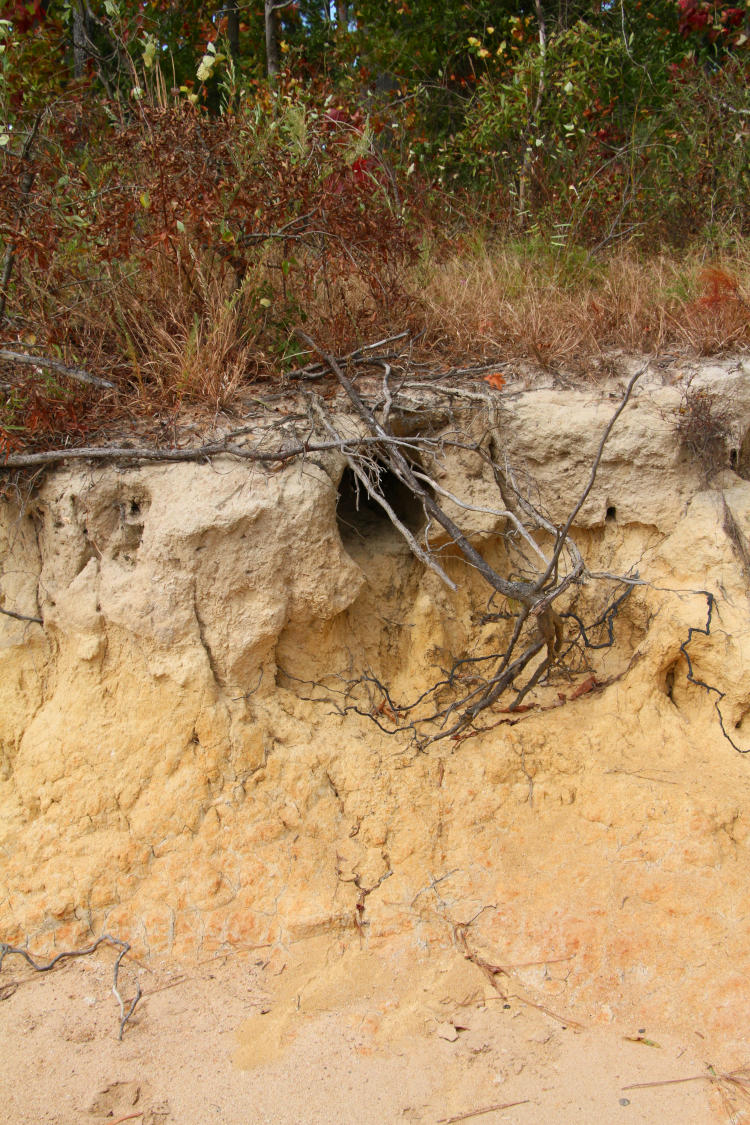
This is, I’m almost certain, the entrance to an old beaver lodge. Most people are familiar with the idea that beaver lodges are mound-shaped structures sitting in the middle of a pond created or expanded by damming, but I can’t say that I’ve ever seen one; every lodge that I’ve come across in NC has been a hollow into the banks of a pond, lake, or river, and this is the first that I’ve been able to get a good look at. Usually tucked in among roots that help maintain the structural integrity, they lead from under the surface along and upwards into a chamber above water, shielded from all predators. For perspective, I was shooting from a standing position on the edge of the current water level, with the ‘normal’ lakeshore at nearly chest level, 1.5 meters higher; the opening that you see here is about 30cm across. This is not as deep under water as I would have expected, but perhaps they were relying on the thicker root cover that existed then. It’s clear that it’s been abandoned for years, which is testament to the beavers’ abilities, especially given the fluctuating water levels and significant erosion around the lake. Here’s a closer look:
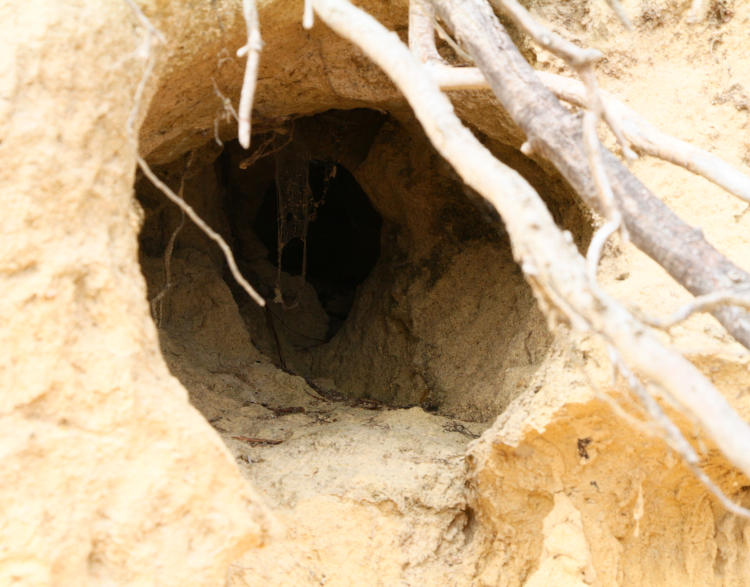
Seems almost a bit haphazard, but my understanding is that the entrance is structured so that most of the water is squeezed out of the beavers’ fur as they enter, leaving things relatively dry in the sleeping/birthing chamber. I’ve also heard that they have an air opening someplace well back from the entrance, one that can probably be quickly expanded to an emergency exit if something does start digging at the entrance, but I have never found distinct evidence of this myself and, if you look at that top photo, would have a devil of a time trying to this time. Obviously I couldn’t see very far into this one, but it remains the best view I’m likely to get of one without an underwater camera and some decent lights.
A little further away, the season revealed something that I’ve been kind of keeping an eye open for.
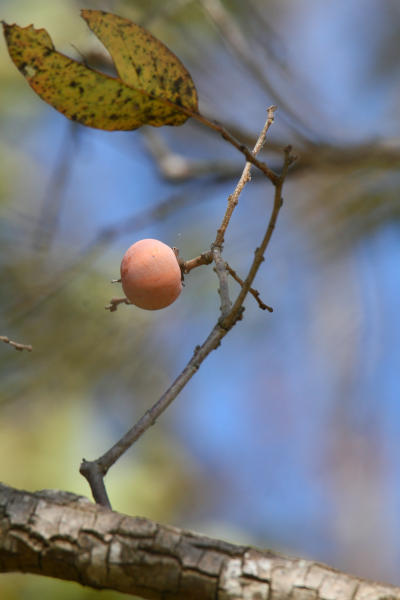 That’s a persimmon, and they grow wild around here sporadically; usually I come along after the fruit has ripened and is gone, because a lot of critters like it. Unfortunately, this was in an area that it would be difficult to access again and thus keep an eye on, nor was it enough to distinguish persimmon trees from others to me – there are way too many trees with leaf-shaped leaves. But the reason why I’d like to identify them is that it provides a dependable bit of activity at nights when the fruits ripen, making it possible to stake out the area; most times, the peregrinations of wildlife are semi-random and not routine, so trying to set up a blind may be a really boring night or three. But the brief ripe season attracts lots of foragers like raccoons, opossums, foxes, and coyotes, and the only other place I’ve seen them doesn’t allow access at night.
That’s a persimmon, and they grow wild around here sporadically; usually I come along after the fruit has ripened and is gone, because a lot of critters like it. Unfortunately, this was in an area that it would be difficult to access again and thus keep an eye on, nor was it enough to distinguish persimmon trees from others to me – there are way too many trees with leaf-shaped leaves. But the reason why I’d like to identify them is that it provides a dependable bit of activity at nights when the fruits ripen, making it possible to stake out the area; most times, the peregrinations of wildlife are semi-random and not routine, so trying to set up a blind may be a really boring night or three. But the brief ripe season attracts lots of foragers like raccoons, opossums, foxes, and coyotes, and the only other place I’ve seen them doesn’t allow access at night.
Along the shore a few hundred meters came proof that the concept is valid, at least:
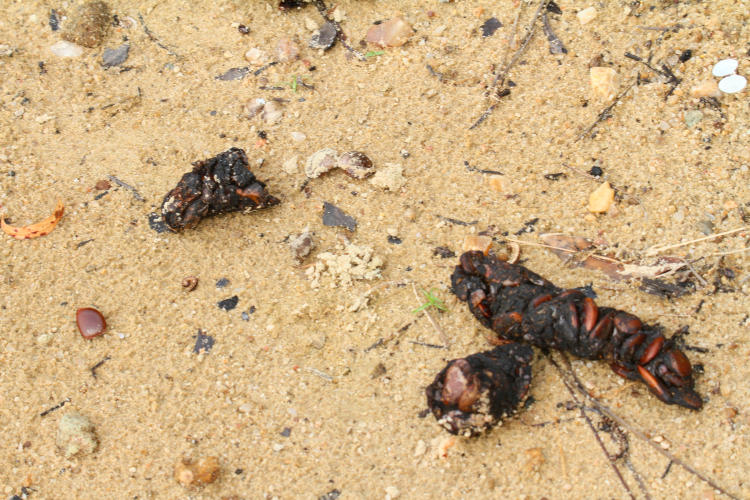
Given the size, shape, and texture, this is likely fox feces, and it’s absolutely riddled with persimmon seeds, explaining why I only found one persimmon, and a fresh one at that, at the base of the tree. Hey, you always said you come here for the shit photos…
The day was actually pretty good for the raptors, but we obtained enough images of egrets as well, and a couple of herons. Two images stand out for me.
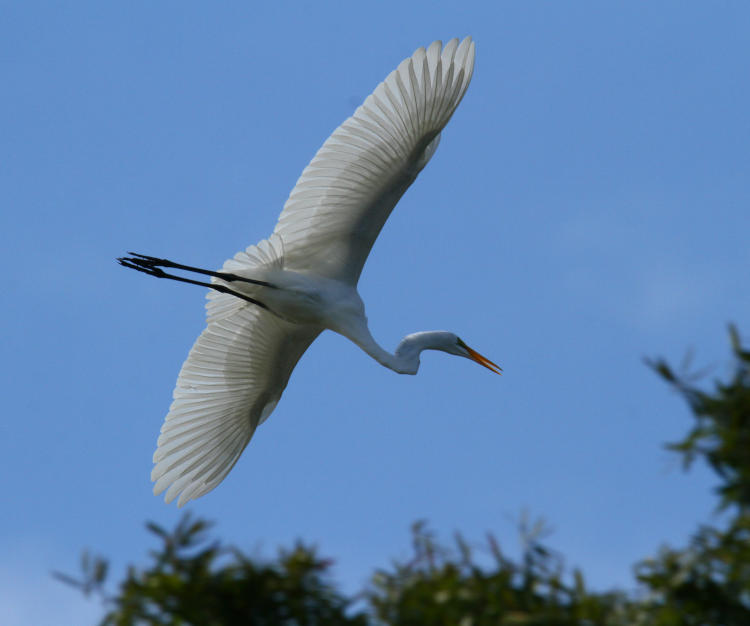
This is a great egret (Ardea alba,) and it was part of a minor altercation. This one cruised in and intruded on another’s territory, and after it disappeared beyond the trees it reappeared about ten seconds later with another in pursuit. But for now, we take a long look at the symmetry and patterns of those backlit wings; along the lower (left) wing, you can even clearly make out the bones, the elbow sitting close to the torso.
When they reappeared, I snagged a handful of images of them both while the chase was carried out silently, which is rare in my experience. One image had to be cropped close for display:
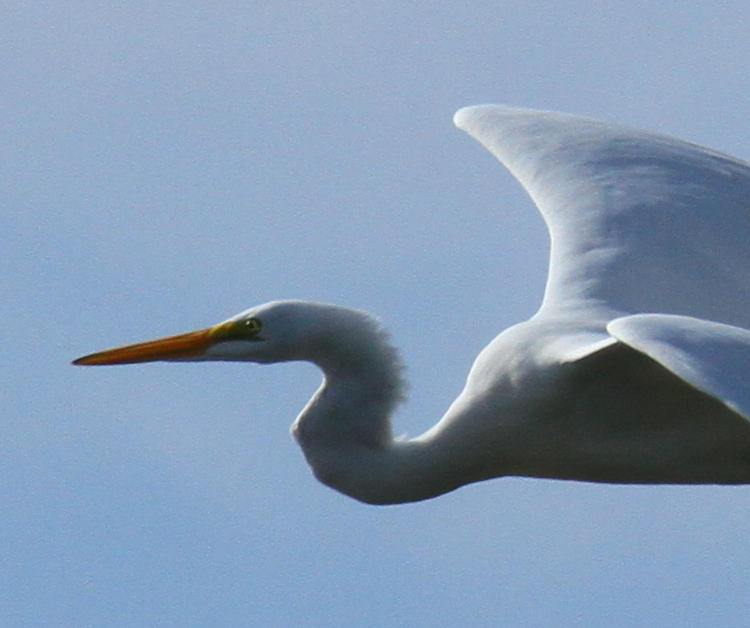
This is actually full resolution of a frame at 600mm from quite some distance away, so I’m glad autofocus behaved itself for a few frames. While I like the lines, I especially like the feathers standing up on the back of the neck, looking windswept but more likely a factor of the territorial chase being enacted, and I can’t recall if this was the chaser or the chasee. There’s also that angular evidence along the throat that their vertebrae are much longer than ours.
As I said, we were considering sunset but the weather reports and the sky itself rendered this highly questionable, though we stuck around to see for sure. Not long before it was to occur, the rain started and we began heading back to the car, but kept an eye on the conditions because the clouds weren’t really indicating a heavy storm, and sure enough, it stopped after a couple of minutes. The sun had remained hidden for most of the afternoon, but as it neared the horizon it broke from cloud cover, still out of sight from us, but lighting up the treetops just behind us. Within minutes, it started illuminating the clouds from underneath.
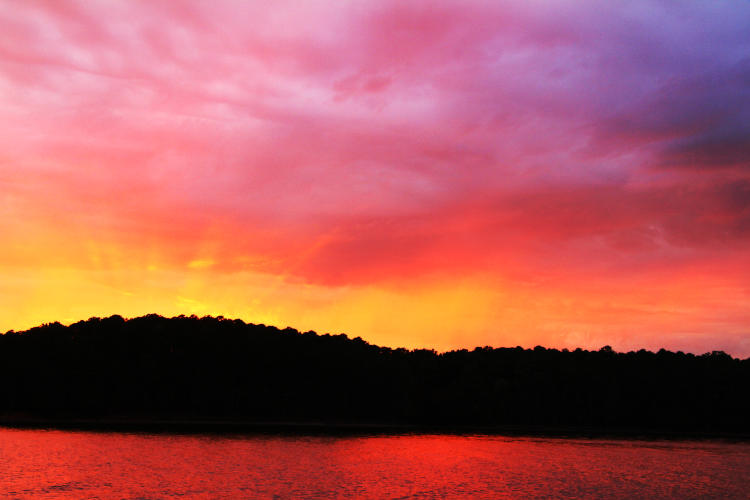
This is where I screwed up, twice. The first was in not bracketing heavily, including with the contrast and saturation settings within the camera, because the images I have don’t show one of the details that I desperately wanted to capture. You can make out the crepuscular rays coming over the trees, but what doesn’t show is the narrow patch of falling rain from a different cloudburst off to the right, appearing in the sunlight as sheets of vertical mist glowing orange. They’re there, just right of center, but not defined enough.
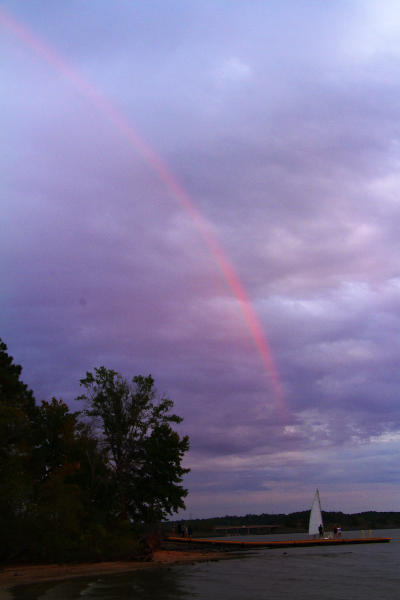 I also failed to realize that the image stabilizer had gotten turned off on the lens somehow, and with the lowering light, too many of the images suffered from motion blur – I’ve gotten spoiled by the technology. So when we turned and looked behind us to see the rainbow, I only captured a couple of frames even as the rain (that had just passed us) moved on and the rainbow faded.
I also failed to realize that the image stabilizer had gotten turned off on the lens somehow, and with the lowering light, too many of the images suffered from motion blur – I’ve gotten spoiled by the technology. So when we turned and looked behind us to see the rainbow, I only captured a couple of frames even as the rain (that had just passed us) moved on and the rainbow faded.
I do have the habit of checking the lens settings as I take the camera from the bag, most times, anyway, but I admit to not checking them every time, and got stung by it. I’m also about to make a small modification to my lenses to differentiate the autofocus, stabilizer, and limiter switches by feel, because too often I’m attempting to change them on the fly as I’m viewing a subject that I want to capture, and lens manufacturers haven’t felt obligated to put these switches all in the same places. I can’t tell you how many little things I would change on equipment if I had the chance, though it really is on me to accommodate things as they are.
Coming up: the raptors from the same outing.




















































